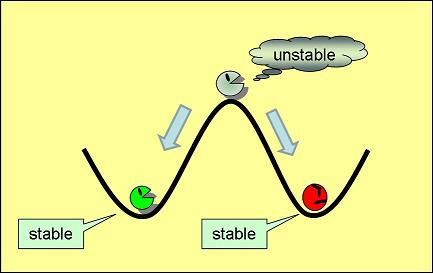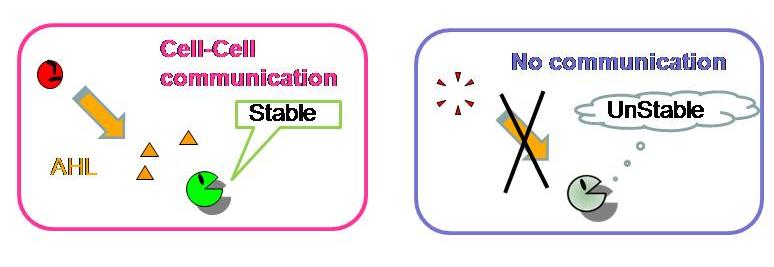Tokyo/Requirements
From 2007.igem.org
| Line 6: | Line 6: | ||
共存安定とは、複数のタイプのものが、一定の割合で存在し続け、環境の変化に対応できることである。 | 共存安定とは、複数のタイプのものが、一定の割合で存在し続け、環境の変化に対応できることである。 | ||
我々は共存安定を動的平衡(化学平衡のような安定)でなく実装する必要がある。--> | 我々は共存安定を動的平衡(化学平衡のような安定)でなく実装する必要がある。--> | ||
| - | + | ==”共存安定”をなすために必要なこと== | |
The most important and underlying point of our model is that the system is stable against environmental changes when two or more types of individuals coexist, called "stable coexistence." Our project have aimed at this "stable coexistence" but not dynamic equilibrium such as chemical ones. | The most important and underlying point of our model is that the system is stable against environmental changes when two or more types of individuals coexist, called "stable coexistence." Our project have aimed at this "stable coexistence" but not dynamic equilibrium such as chemical ones. | ||
Revision as of 15:36, 24 October 2007
Abstract Concept & Model Requirements Genetic_circuit Works About_our_team
”共存安定”をなすために必要なこと
The most important and underlying point of our model is that the system is stable against environmental changes when two or more types of individuals coexist, called "stable coexistence." Our project have aimed at this "stable coexistence" but not dynamic equilibrium such as chemical ones.
To achieve this “stable coexistence", our model requires
1. bistability at two distinct states in a single cell
2. cell-cell communication by quarum sensing
1. Bistability
~ at an individual level ~
For "stable coexistence" in our model, two types of cells should coexist stably. Therefore, cells with THE SAME GENE SET need to take either of TWO STATES, A (Worker) or B (Idler) in our project as shown in Fig. 1. In order to distinguish from dynamic stability, "stable coexistence" must be achieved by two distinct states inconvertible each other.
2. Cell-cell communication
When this stable coexistence is disrupted, by removing all the A type for example, these individual cells sense the change. Their states A or B become unstable as if cells became upset - INDIVIDUAL STATES ARE UNSTABLE ⇒ They are COLLECTIVELY UNSTABLE. Then some of them changed their states while the others do not. As a result, at a certain ratio of A and B again, the whole system comes back to a stable states. Here the cells are COLLECTIVELY STABLE ⇒ INDIVIDUALS ARE STABLE under this stable coexistence.

